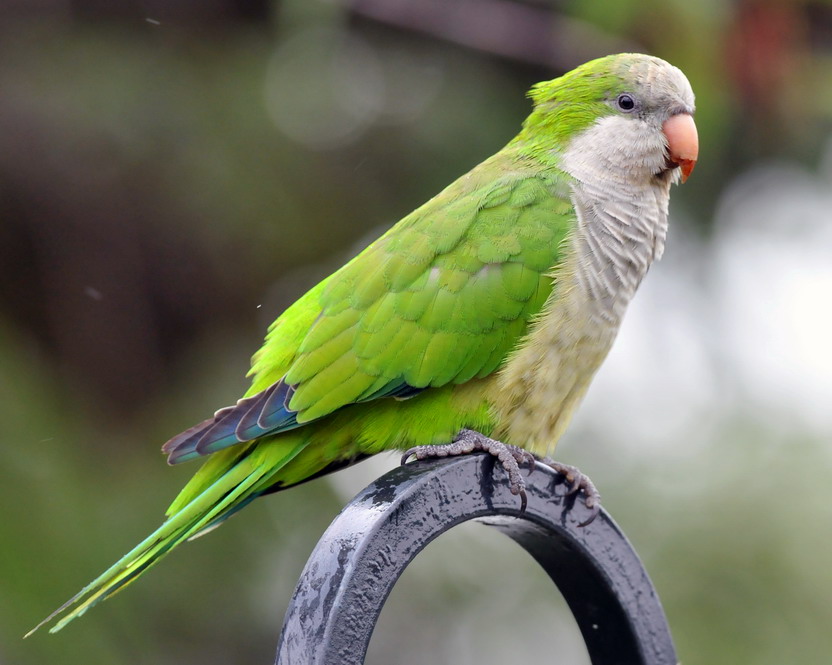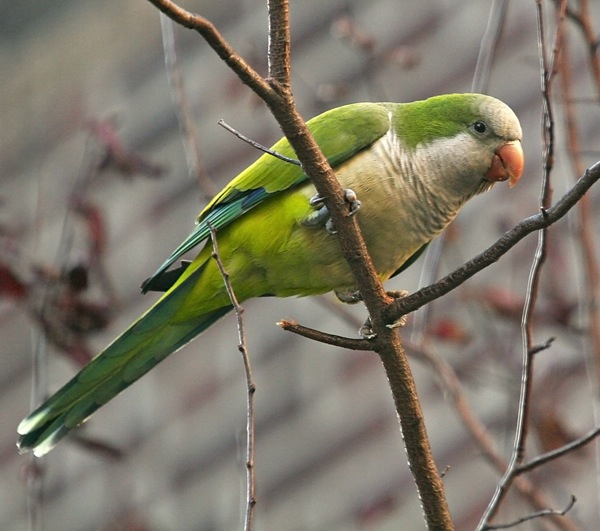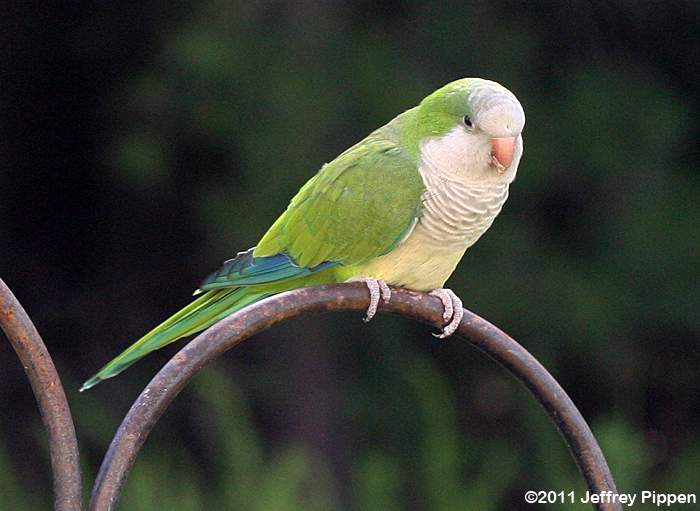
Myiopsitta monachus
SUBFAMILY
Psittacinae
TAXONOMY
Psittacus monachus Boddaert, 1783, Uruguay. Four subspecies.
OTHER COMMON NAMES
English: Quaker parrot, gray-breasted parakeet; French:
Conure veuve; German: Mцnchsittich; Spanish: Cotorra Argentina.
PHYSICAL CHARACTERISTICS
11.4 in (29 cm); 4.5–4.9 oz (127–140 g). Small to mediumsized
bird with mostly green plumage and gray or dull white
face, cheeks, and throat. Long, green tail feathers; pale orange
or yellow bill.
DISTRIBUTION
M. m. monachus: southeast Brazil to Uruguay and northeast Argentina.
M. m. calita: western Argentina. M. m. cotorra: northwest
Argentina and south Bolivia to Paraguay and south Brazil.
M. m. luchsi: central Bolivia; probably separate species. Feral
population in many locations, including North America and
Europe.
HABITAT
In central Bolivia, in riverine vegetation in arid scrublands near
cliff-faces in intermontane valleys (M. m. luchsi); elsewhere, dry
semi-open lowlands in savanna woodland, gallery forest, dry
Acacia scrublands, palm groves, pasturelands or cultivation, and
urban parks or gardens; often prevalent near human habitation.
BEHAVIOR
Sedentary, but some localized, seasonal movements at fringes
of range. Noisy and highly gregarious; flocks of 10–100 or
more always in the vicinity of conspicuous communal nests
serving as foci for daily activities. Wary when away from shelter;
“sentinel” birds sit atop nearby trees to warn feeding flock
of approaching danger, and when disturbed all rise into the air,
screeching loudly; intruder at nest is watched intently and in
silence for some time before birds rise into the air and circle
overhead to the accompaniment of loud screeching; swift flight
usually low to the ground; daytime resting and nighttime
roosting in nests throughout the year.
FEEDING ECOLOGY AND DIET
Diet mainly seeds of grasses and herbs, also nuts, fruits,
berries, leaf buds, blossoms, and insect larvae; seeds of thistles
important during breeding season; seeds of Celtis tala and palm
nuts also favored; fond of cultivated grain and fruits.
REPRODUCTIVE BIOLOGY
Monogamous. Breeding season October–March. Nest unique
among parrots: large, bulky structure of dry twigs placed in
topmost branches of tree, especially introduced eucalypti, or
sometimes in transmission tower, pylon, windmill, or under
roof of building. Single compartment nests occupied by solitary
pairs, but mostly large, communal nests with multiple
compartments for many pairs, and probably added to over
many years. In central Bolivia, nests of M. mluchsi are not communal,
but often immediately adjacent to each other, and
placed in crevices in cliff-faces. Average clutch seven eggs, but
sometimes up to 11 eggs; in captivity incubation lasts 24 days
and nestling period about six weeks.
CONSERVATION STATUS
Generally common, locally abundant; benefiting from planting
of introduced eucalypts on treeless grasslands; expanding range
and increasing numbers. Listed on CITES Appendix II.
SIGNIFICANCE TO HUMANS
Widely persecuted as serious pest in orchards and croplands.
Exported in large numbers for live-bird market, but potential
as pest in importing countries.
Photo Gallery of - Monk parakeet




 Animalia Life
Animalia Life